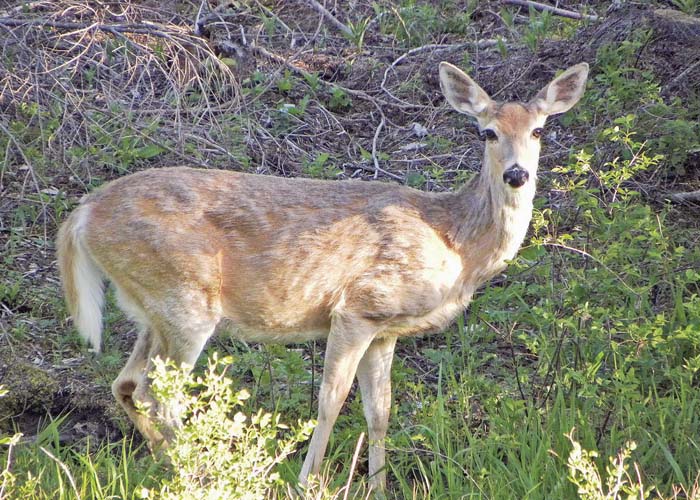Deer death toll up to 36
Published 2:00 pm Friday, September 17, 2021

- White-tailed deer, which are found throughout Northeastern Oregon, are especially susceptible to the Epizootic Hemorrhagic Disease, which is spread by biting midges.
The death toll in deer in Baker Valley from a disease spread by midges has risen to 36 in less than a month.
Trending
But a local wildlife biologist who’s tracking the outbreak said the arrival of colder weather will end the threat, at least until next year.
“One good freeze is all we need,” said Brian Ratliff, district wildlife biologist at the Oregon Department of Fish and Wildlife’s (ODFW) Baker City office.
A hard frost will kill the bugs that infect deer with a virus that causes the often fatal illness, Epizootic Hemorrhagic Disease (EHD).
Trending
Although EHD can kill both white-tailed and mule deer, Ratliff said the disease usually is most virulent among white-tails.
And that has proven to be the case in Baker Valley’s current outbreak, with 33 of the 36 dead deer he’s examined being white-tails.
Ratliff said he has taken tissue samples from 12 of the deer, and all were positive for EHD.
All the dead deer were found near the western edge of Baker Valley, in the area of Pine Creek, Goodrich Creek, Ben Dier Lane and Hunt Mountain, Ratliff said.
White-tailed deer are common in that part of the valley, about 12 miles northwest of Baker City.
Deer can’t spread the virus to other deer or animals by direct contact. Midges carrying the virus can infect other animals, including mule deer, elk, pronghorn antelope, sheep and cattle, but the mortality rate is much higher with white-tailed deer than with other species, Ratliff said.
The virus poses no threat to people, cats or dogs. Nor can people become ill by eating the meat of a deer or other animal infected with EHD.
An outbreak of EHD killed an estimated 2,000 white-tailed deer in Umatilla County during the fall of 2019, resulting in the cancellation of some deer hunts in that area.
Ratliff said the EHD outbreak in Baker Valley won’t affect this fall’s hunting season, but it’s possible that tag numbers could be reduced for white-tailed hunts in 2022.
The biggest recent outbreak in Baker County happened during the late summer and early fall of 2015, Ratliff said.
He said ODFW didn’t compile an official death toll then, but he believes many dozens of white-tailed deer died in the county in 2015.
Ratliff said EHD outbreaks typically start later in the year, when water sources are more scarce, forcing deer to congregate in those places and making them more likely to either be infected by midges, or, in the case of deer that already carry the virus, to spread it to midges that bit them.
The virus can spread in both ways, he said — from infected deer to midges, and from infected midges to deer.
That allows the illness to spread rapidly in certain conditions.









